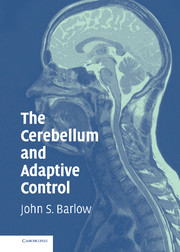Book contents
- Frontmatter
- Contents
- Preface
- Acknowledgments
- PART ONE ANATOMY AND PHYSIOLOGY OF THE CEREBELLAR SYSTEM
- 1 Introduction
- 2 Comparative Anatomy of the Cerebellum
- 3 Anatomy and Physiology of the Cerebellar Cortex
- 4 The Mossy Fiber Afferent System
- 5 The Inferior Olivary System and the Climbing Fibers
- 6 The Cerebellar Nuclei and Their Efferent Pathways: Voluntary Motor Learning
- PART TWO CEREBELLAR FUNCTIONS
- PART THREE MODELS AND THEORIES
- PART FOUR SUMMARY AND CONCLUSIONS
- APPENDIX A A Hybrid Analogue/Digital Multiplexer/Multiplier-Based Adaptive Signal Processor
- Author's Note
- Bibliography
- Index
6 - The Cerebellar Nuclei and Their Efferent Pathways: Voluntary Motor Learning
Published online by Cambridge University Press: 28 October 2009
- Frontmatter
- Contents
- Preface
- Acknowledgments
- PART ONE ANATOMY AND PHYSIOLOGY OF THE CEREBELLAR SYSTEM
- 1 Introduction
- 2 Comparative Anatomy of the Cerebellum
- 3 Anatomy and Physiology of the Cerebellar Cortex
- 4 The Mossy Fiber Afferent System
- 5 The Inferior Olivary System and the Climbing Fibers
- 6 The Cerebellar Nuclei and Their Efferent Pathways: Voluntary Motor Learning
- PART TWO CEREBELLAR FUNCTIONS
- PART THREE MODELS AND THEORIES
- PART FOUR SUMMARY AND CONCLUSIONS
- APPENDIX A A Hybrid Analogue/Digital Multiplexer/Multiplier-Based Adaptive Signal Processor
- Author's Note
- Bibliography
- Index
Summary
The Cerebellar Nuclei
This chapter, which is largely based on Brodal (1981) and Chan-Palay (1977), is concerned mainly with the lateral (dentate) nucleus, as representative of the cerebellar nuclei, which also include the interpositi (emboliform and globose) and the medial (fastigial) nuclei, the terms in parentheses indicating those for the human cerebellum.
Anatomical Aspects
In humans, there are four distinct cellular masses or nuclei in the white matter of each half of the cerebellum (also termed the deep cerebellar nuclei). Most medial is the fastigial nucleus, followed more laterally by the small globose and emboliform nuclei and, most laterally, the dentate. The dentate nucleus appears in sections as a wrinkled band of gray matter (not unlike the inferior olive) with a medioanteriorly directed hilus. In the rat, cat, monkey, and most mammals, the usually accepted counterparts are the nucleus medialis, nucleus interpositus anterior and posterior, and nucleus lateralis, respectively.
The dentate nucleus is enormous in humans, both in comparison with the other nuclei and in comparison with other species; in fact, it has been estimated to contain some 284,000 cells (see also Heidary and Tomasch 1969). The principal afferent fibers to the cerebellar nuclei are the Purkinje cell axons from the cerebellar cortex, which are inhibitory. Other afferents include collaterals of the climbing and the mossy fibers, which are excitatory. Almost all efferent fibers from the cerebellum are axons of cells in the cerebellar nuclei.
- Type
- Chapter
- Information
- The Cerebellum and Adaptive Control , pp. 68 - 86Publisher: Cambridge University PressPrint publication year: 2002

